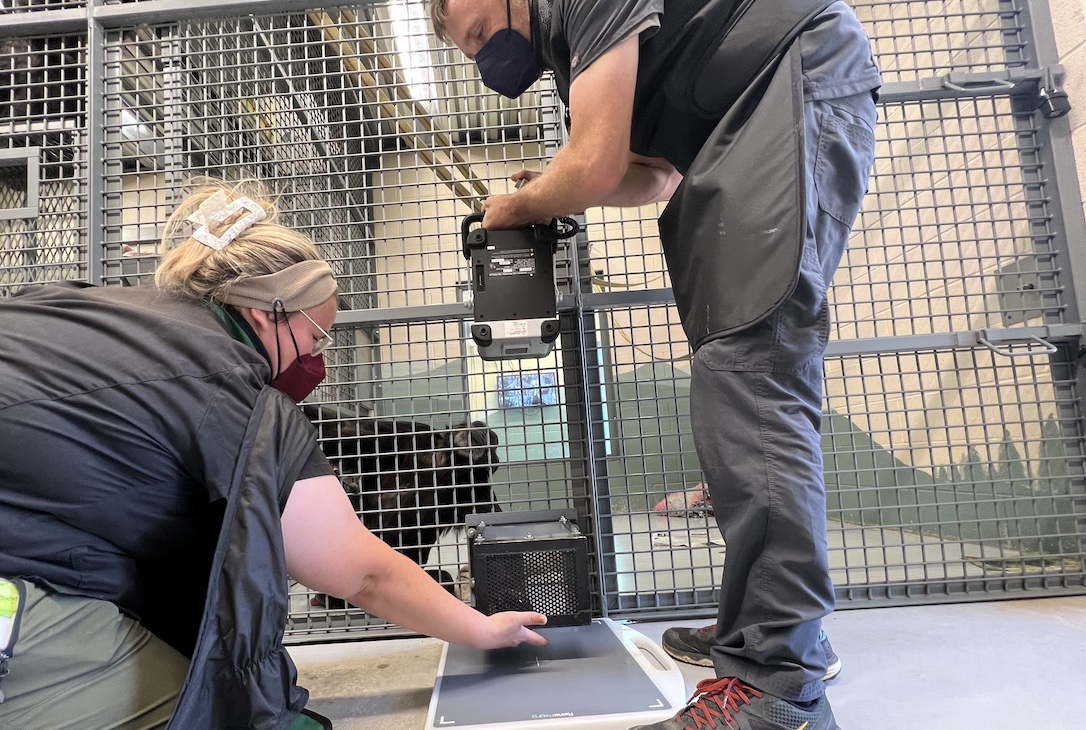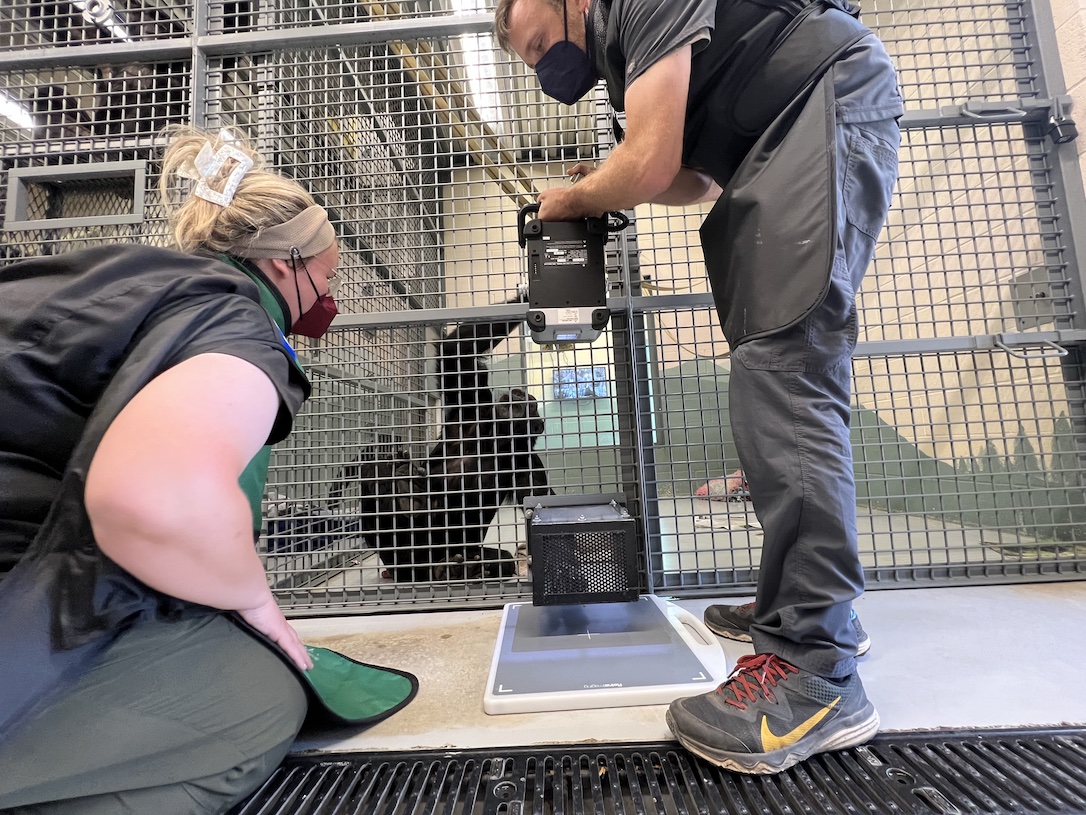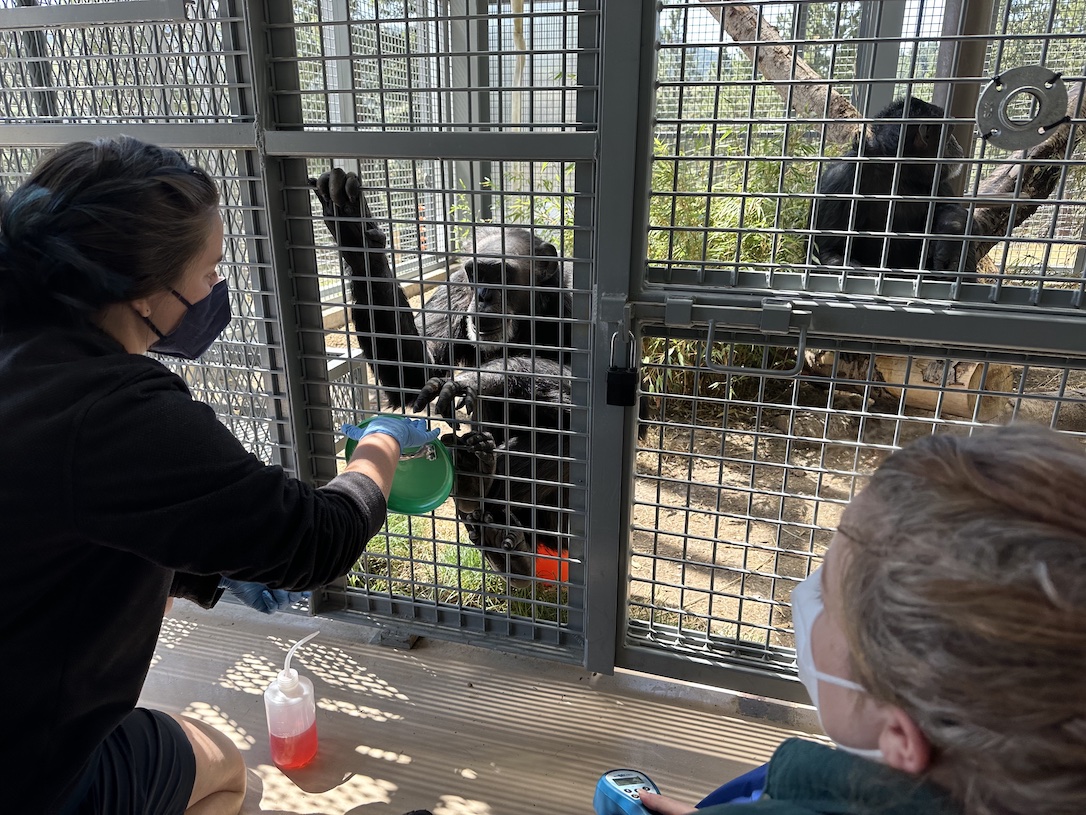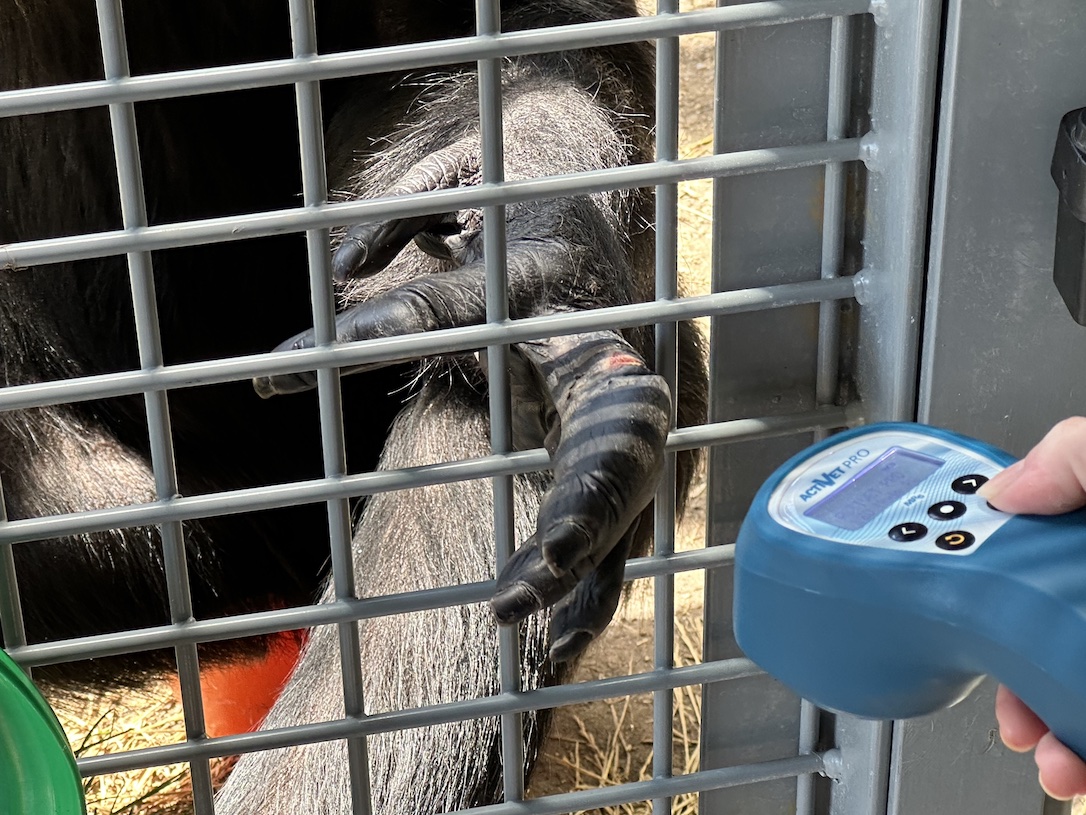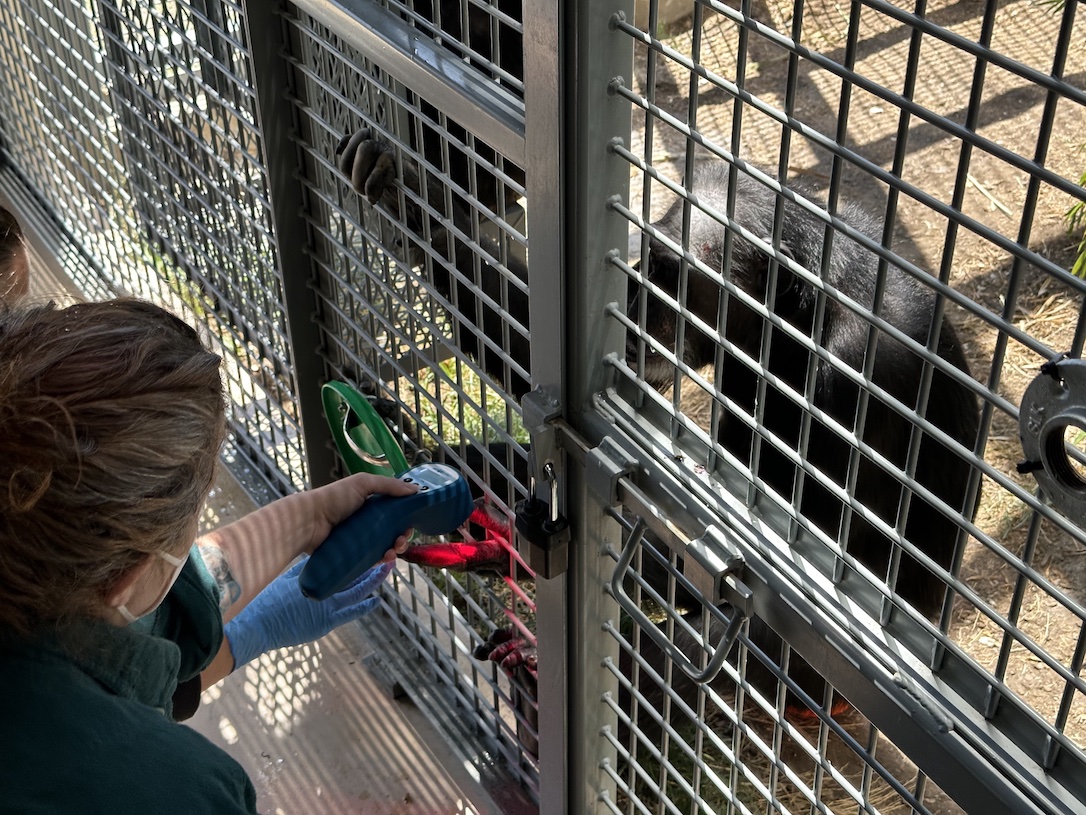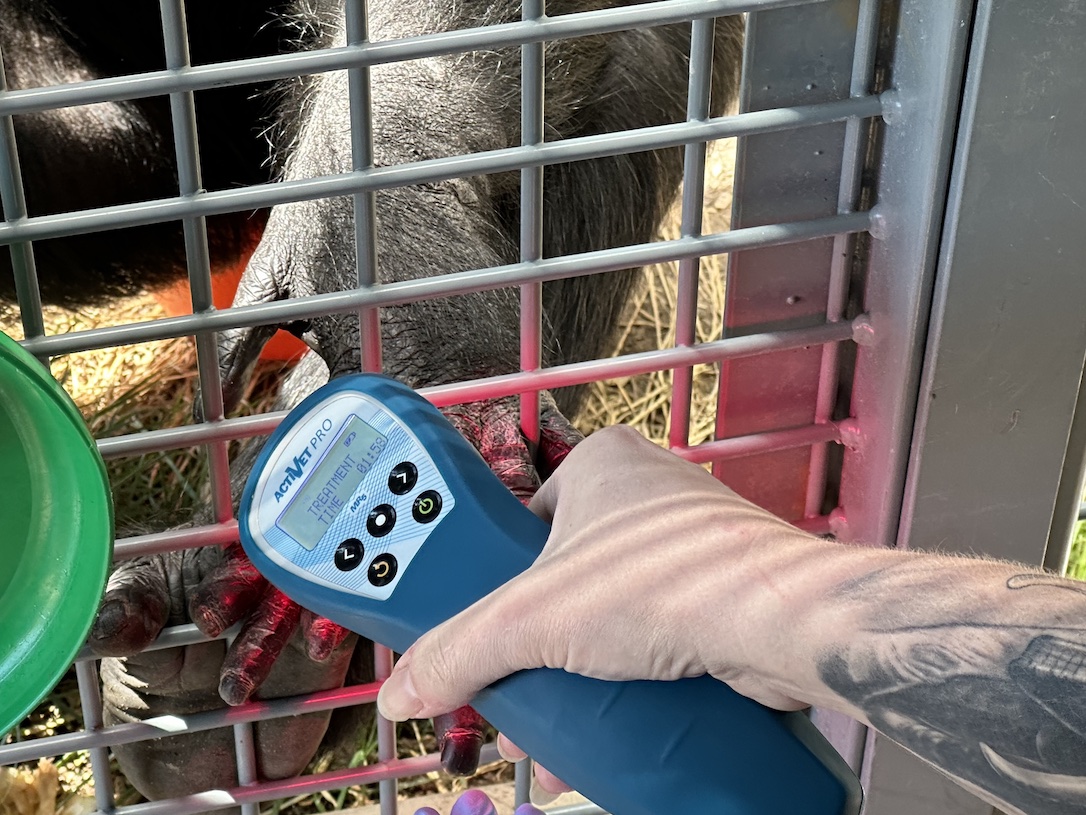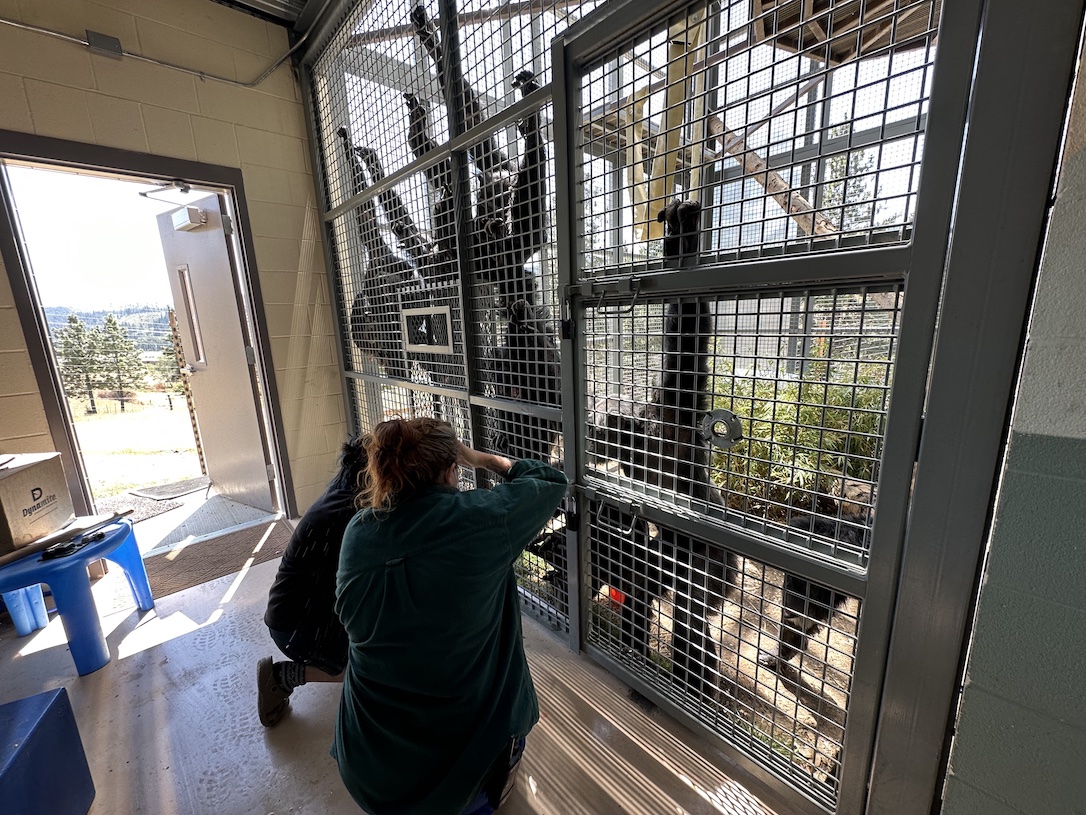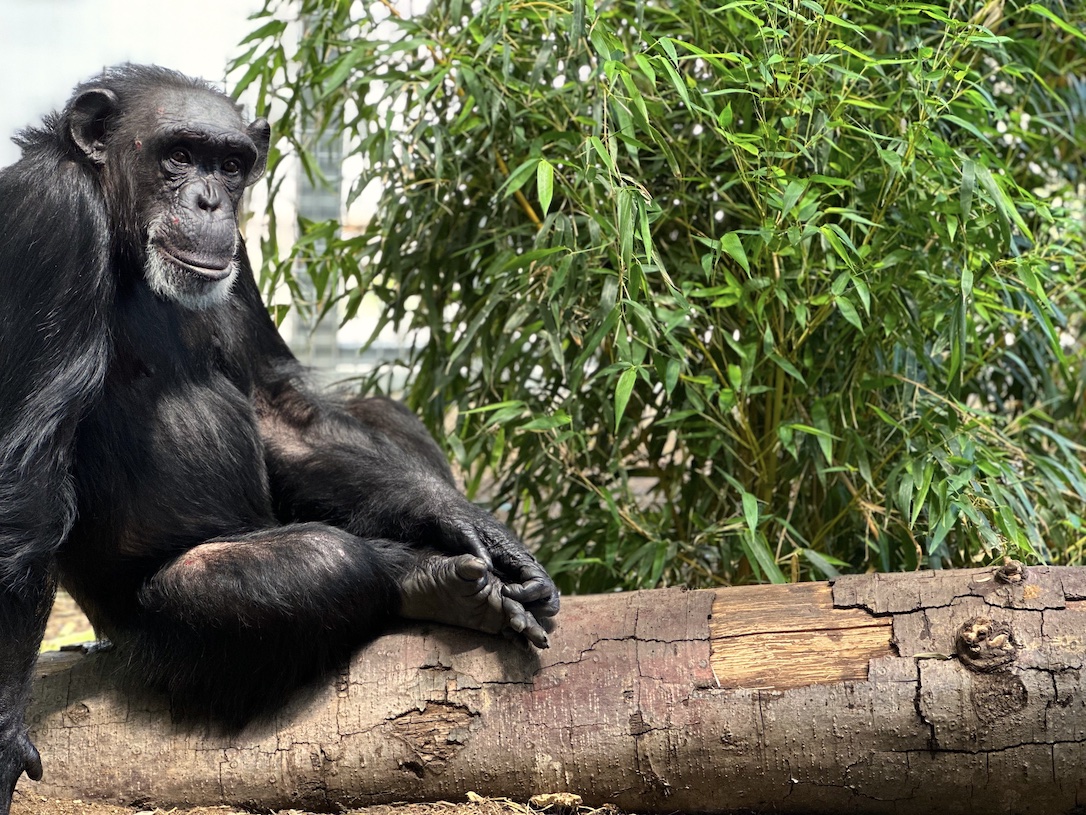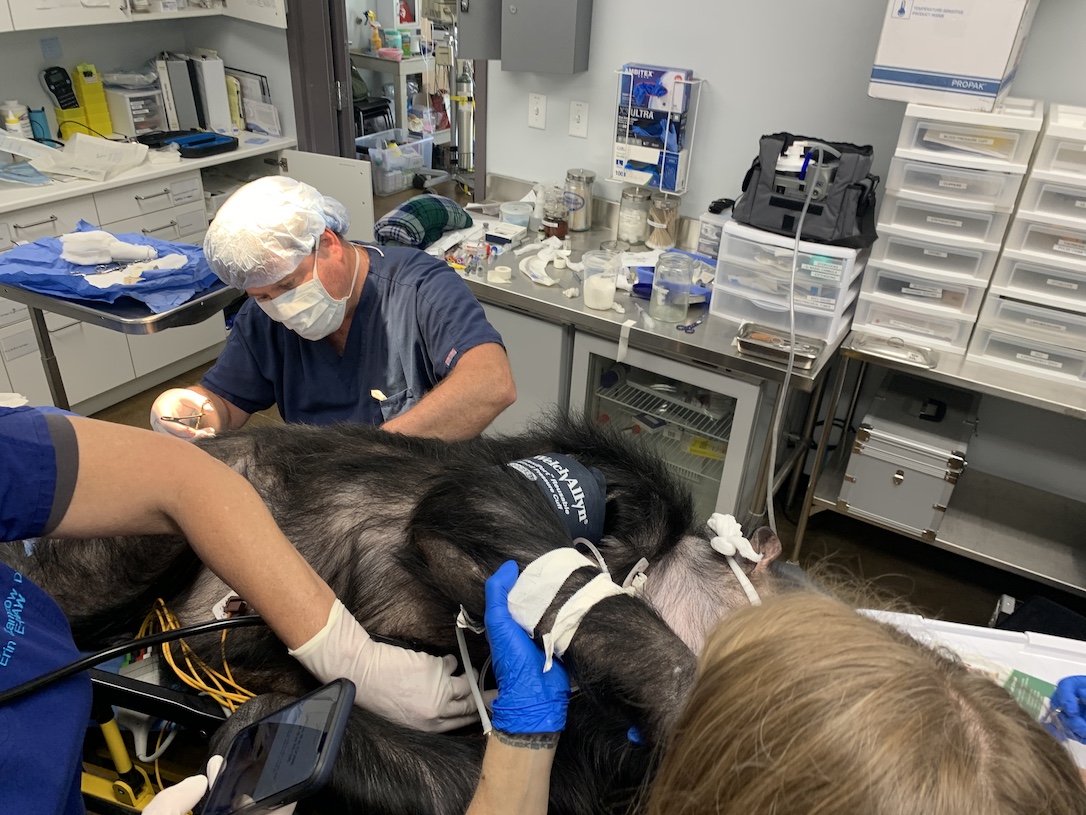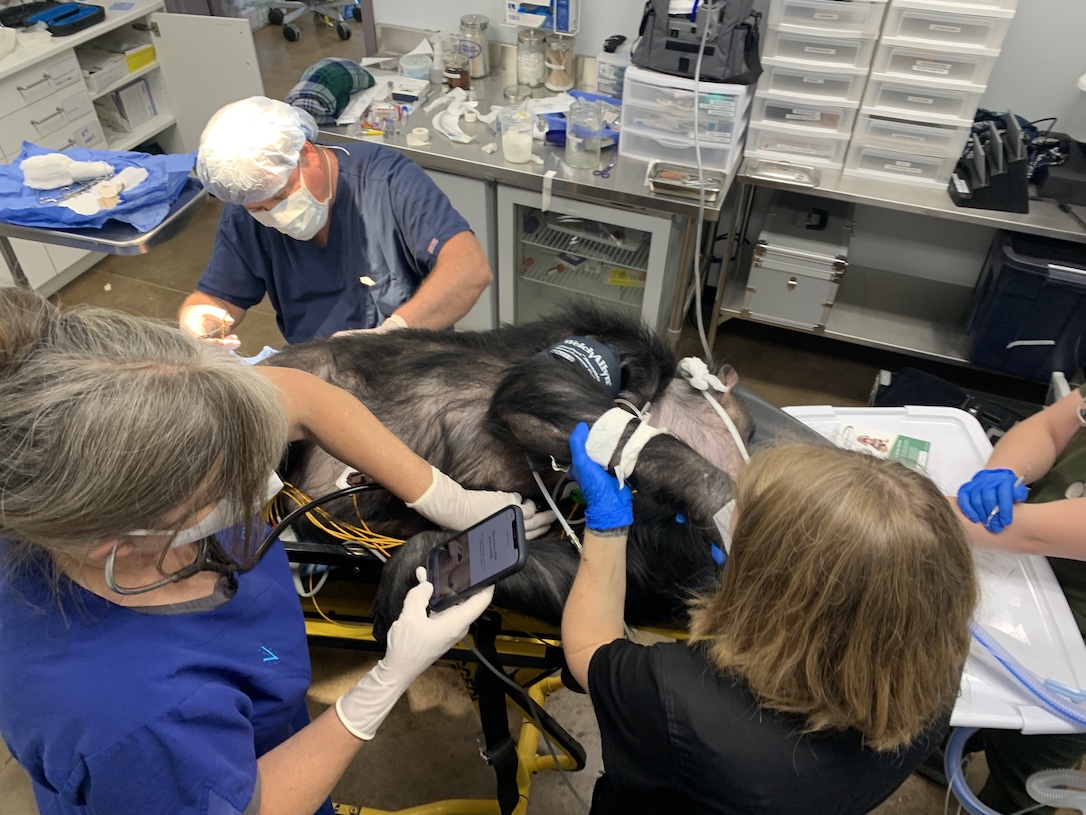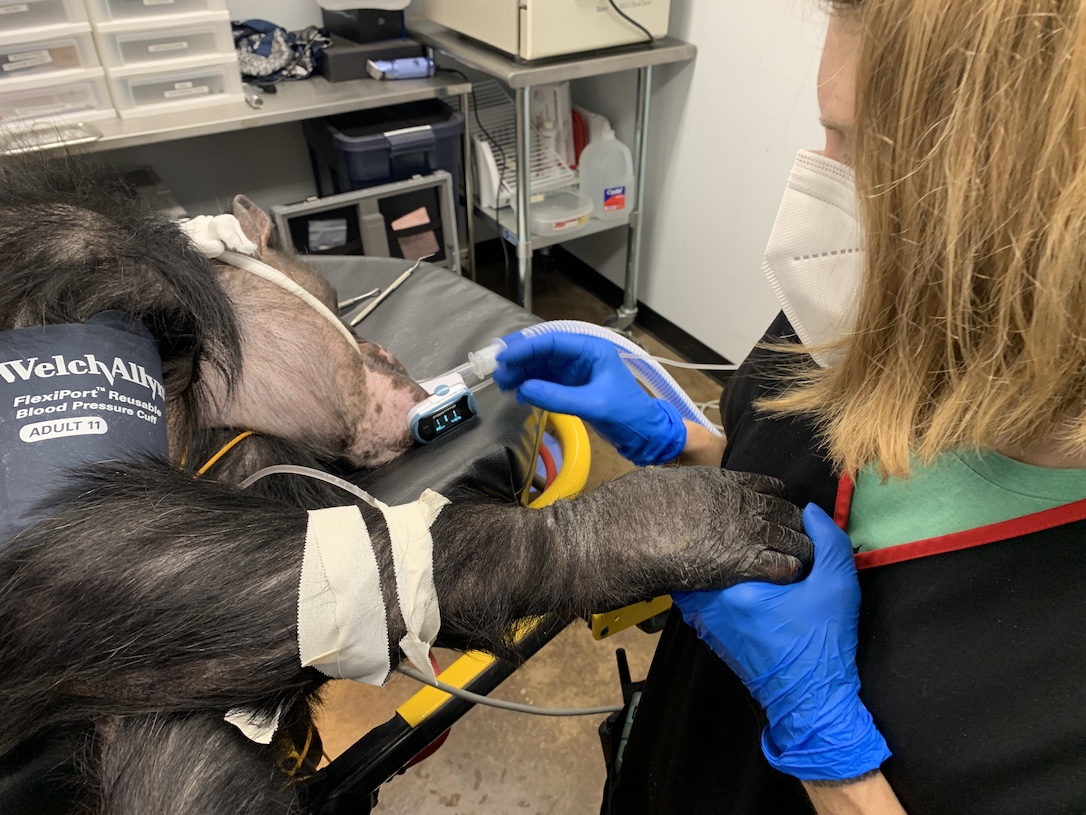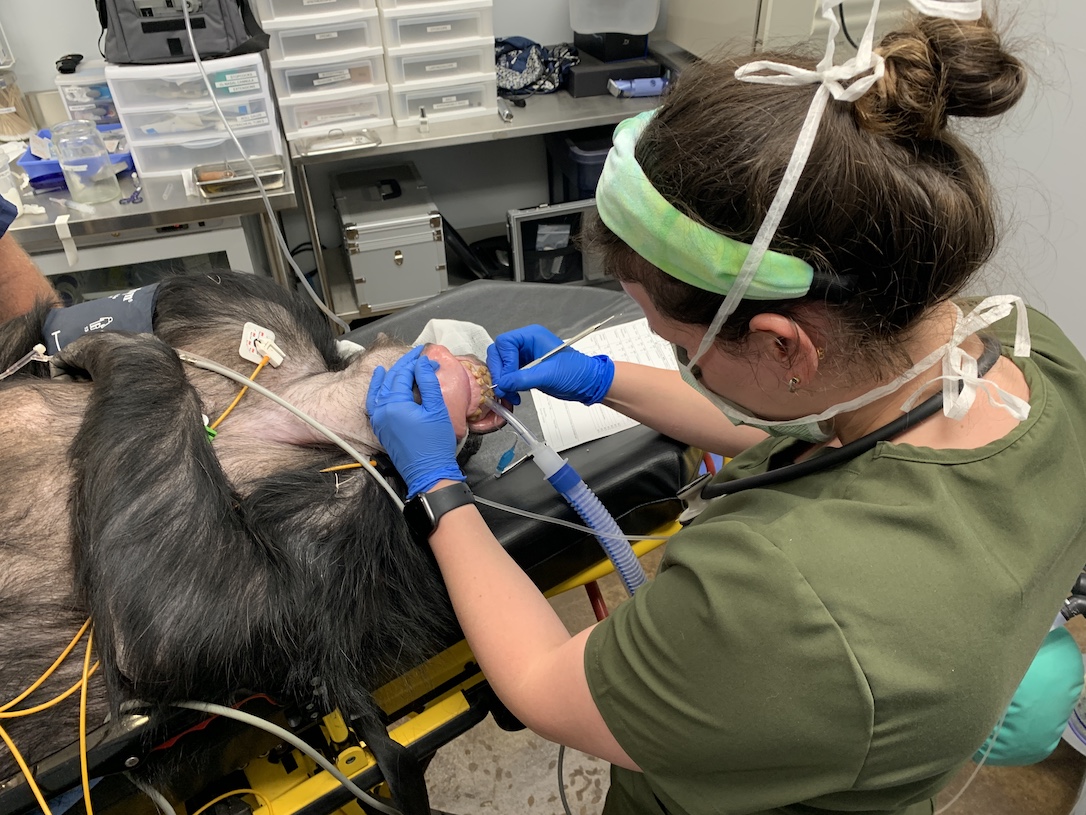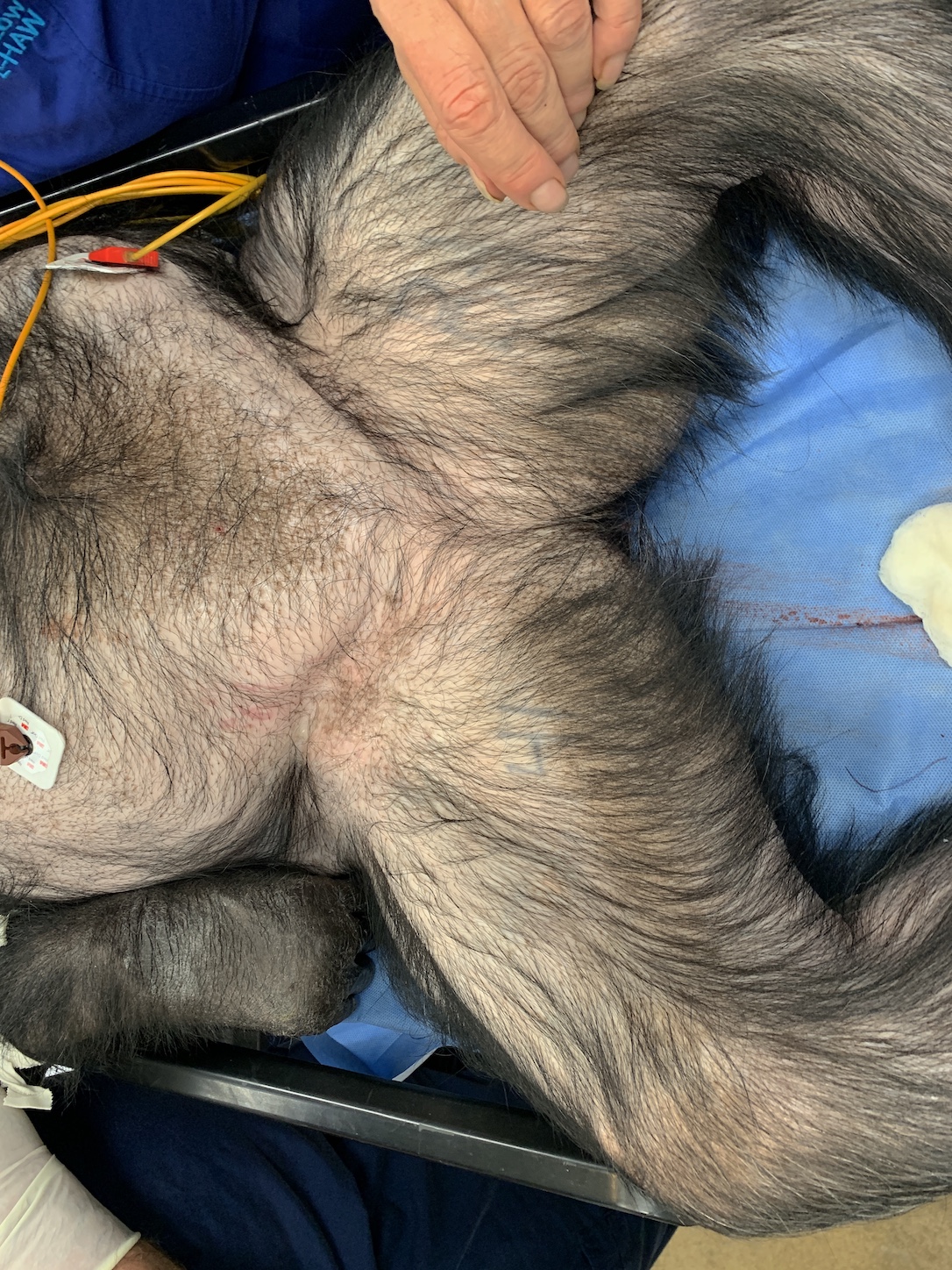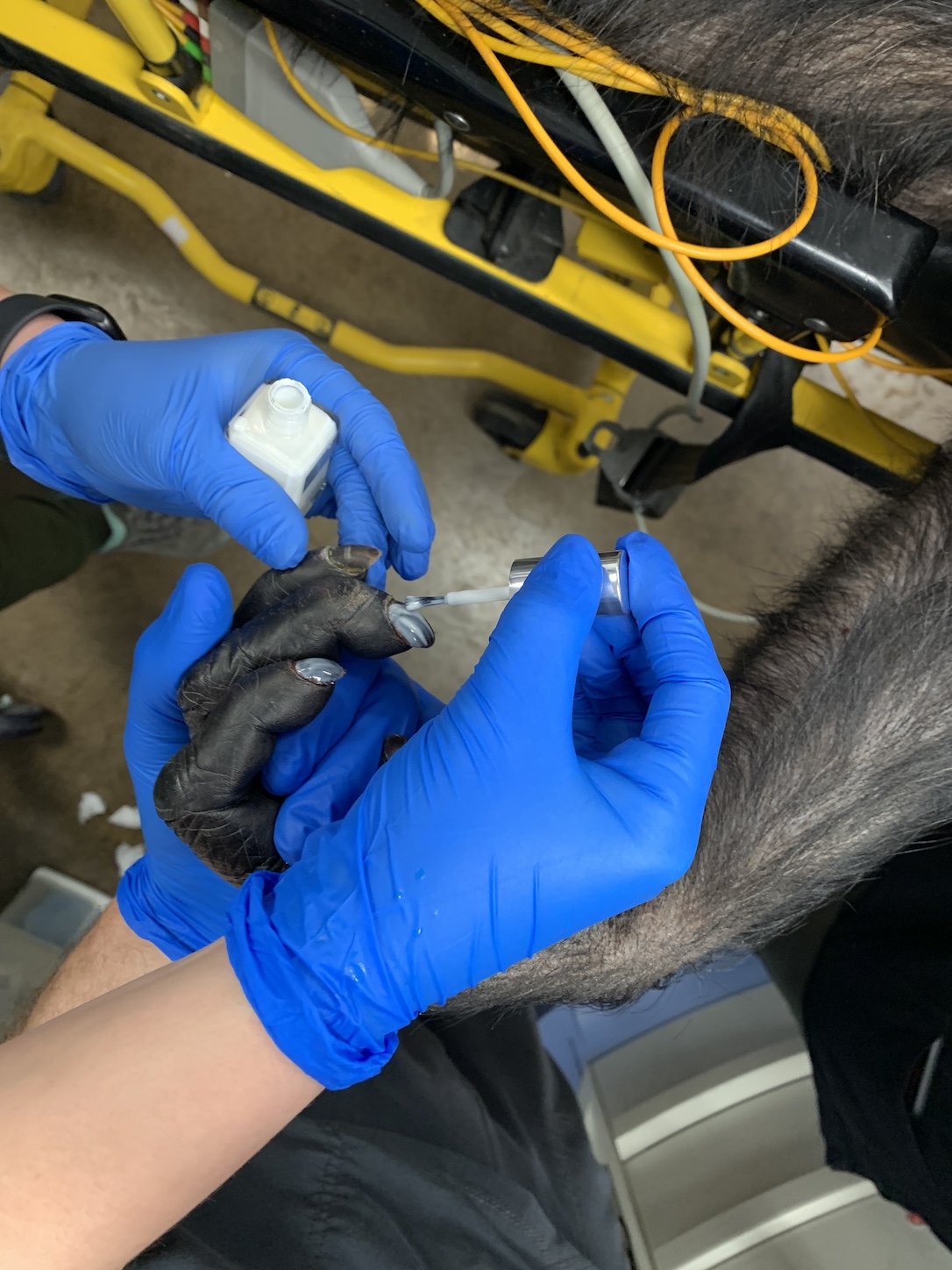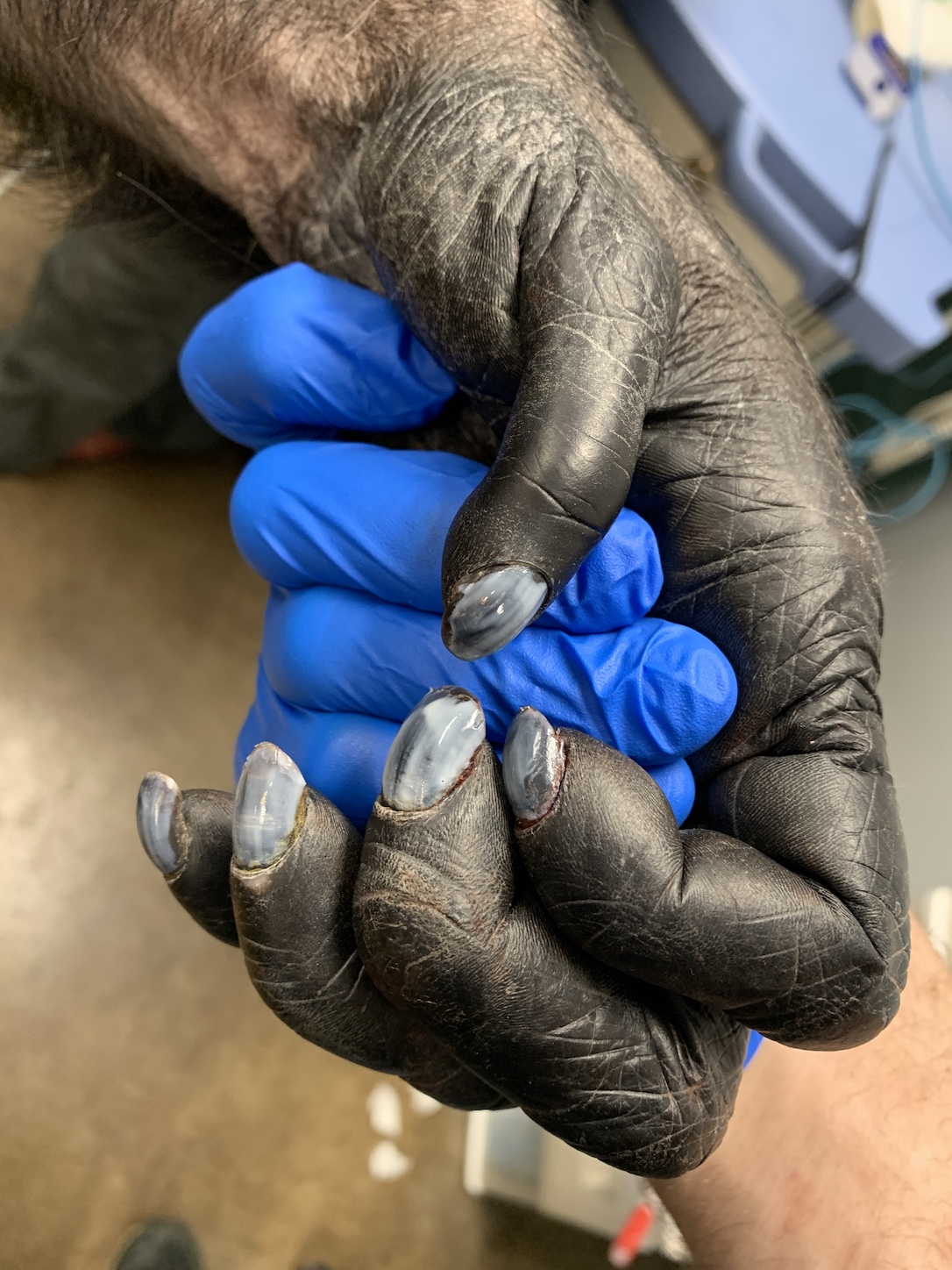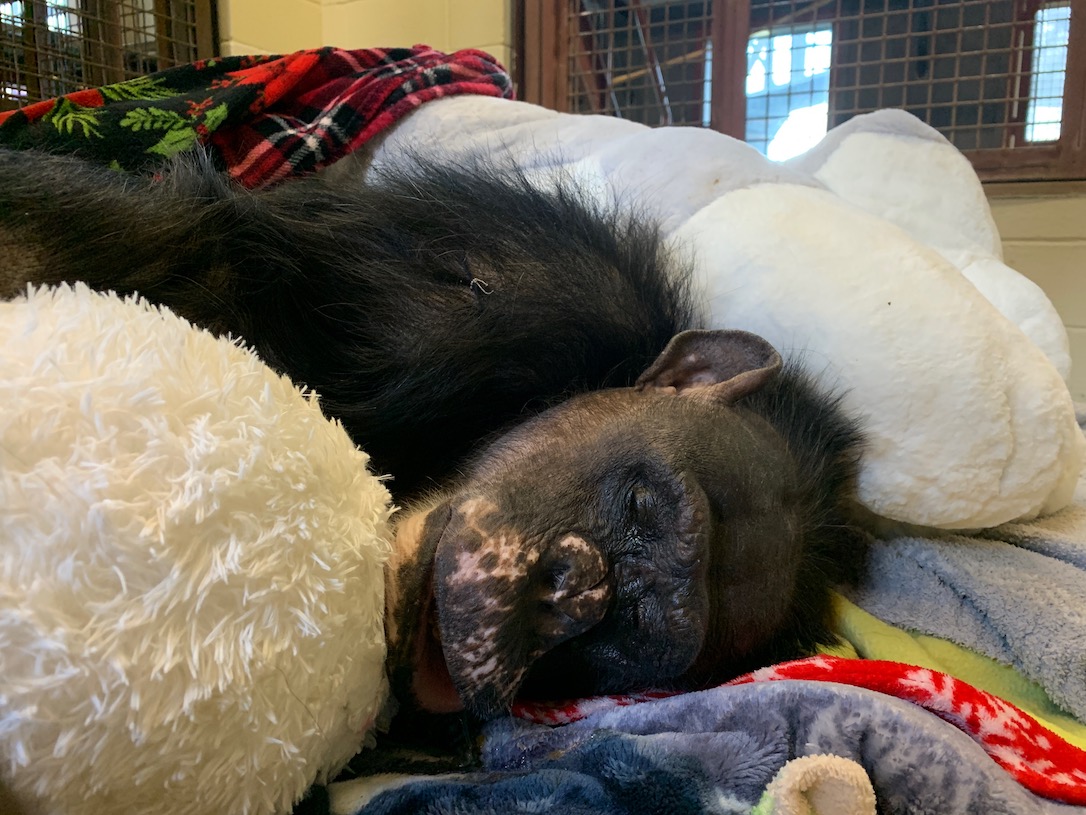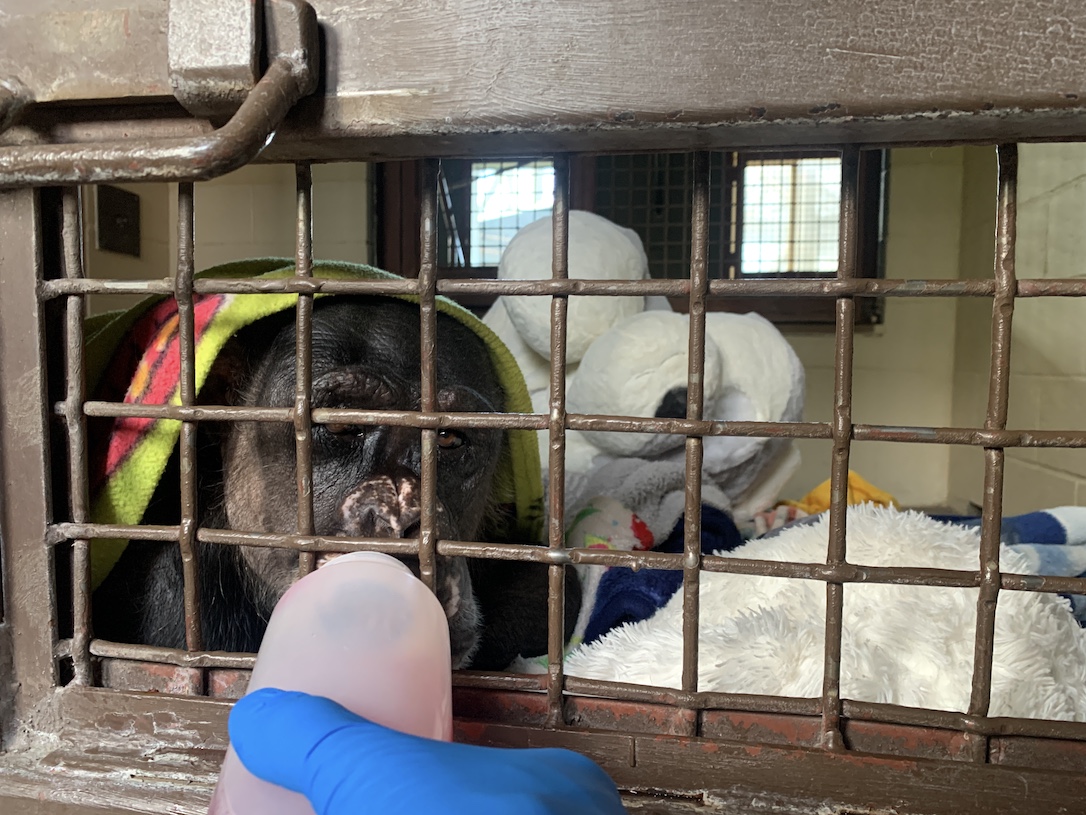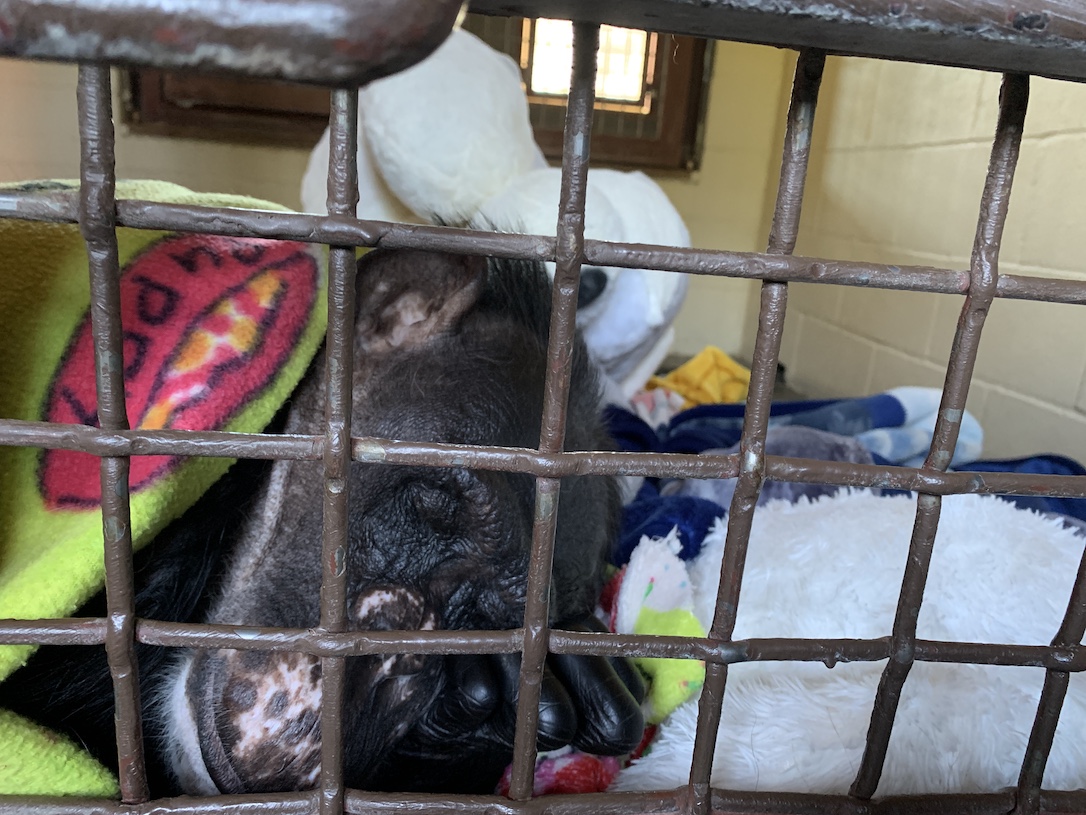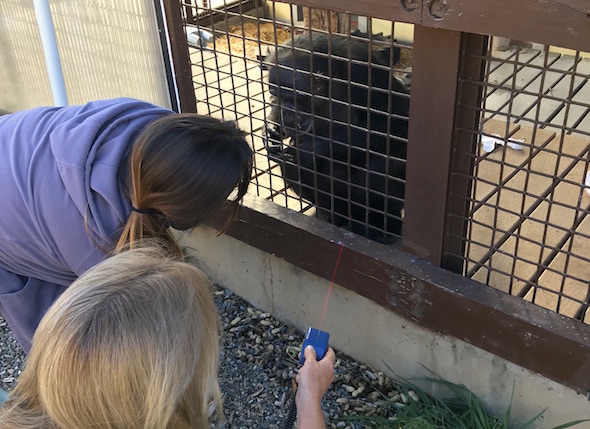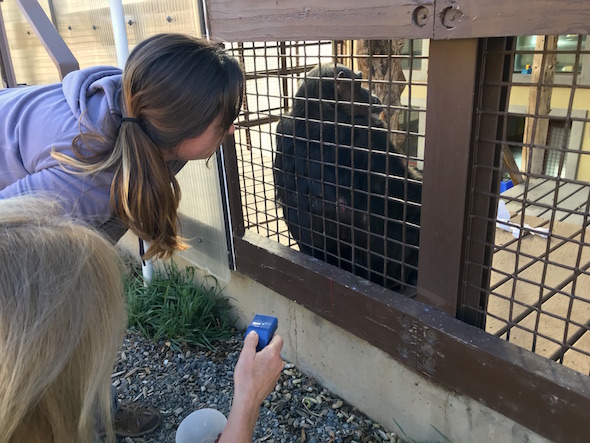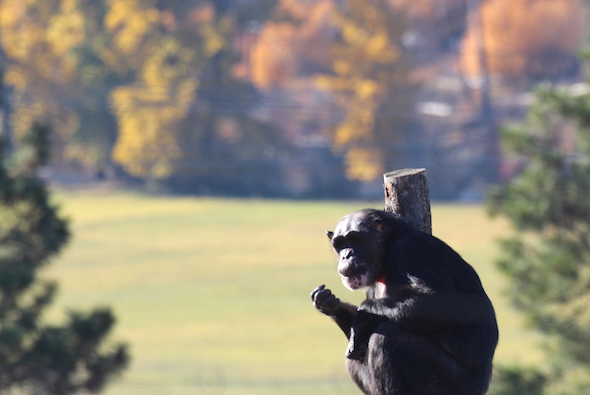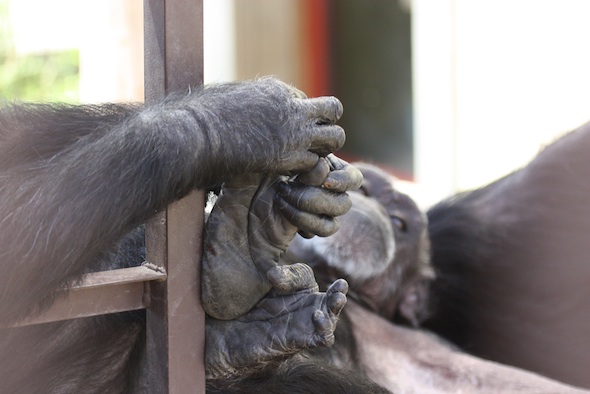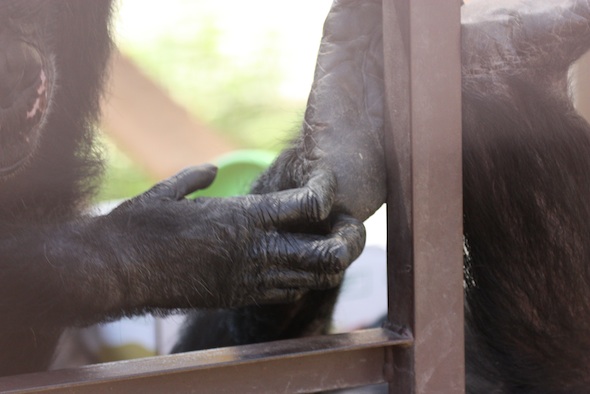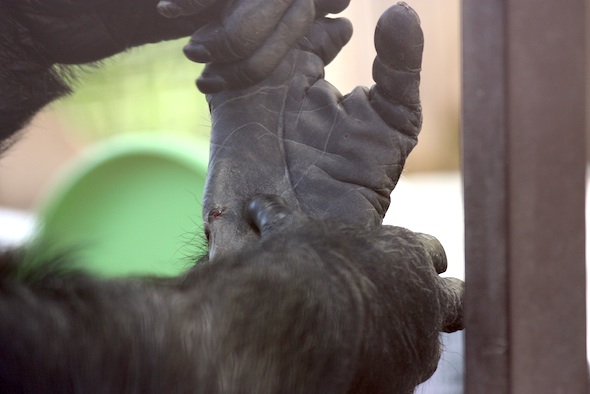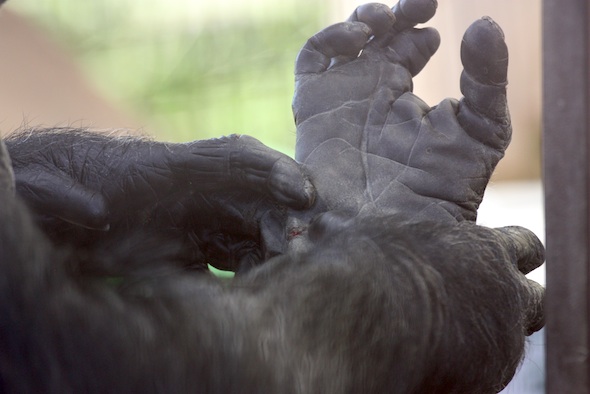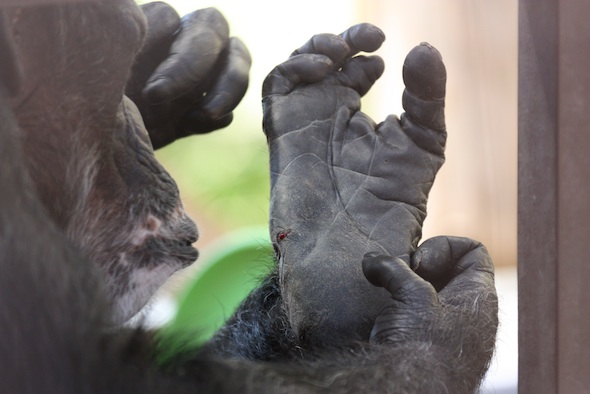Bite wounds are probably the most common injuries we see in chimps. Our treatment protocols for these wounds tend to be fairly conservative: administer analgesics for pain, clean frequently with antiseptic spray, and monitor closely. There are a few reasons for this. First, chimps have a superhuman (literally) ability to heal. Wounds that would send me racing to the ER for stitches will close up on their own in chimps with little to no treatment in a matter of days or weeks, remaining uninfected and leaving no visible trace once healed. Second, because of the frequency of wounding in captive groups, there’s always a risk of antibiotic resistance if antibiotics are over prescribed. And third, many forms of diagnostics and treatment require the chimps to be anesthetized—something we avoid whenever practical out of concern for their overall safety and well being.
Once and a while, though, there are wounds that require a bit more than the typical conservative approach—like recently, when Rayne received a bite to her third digit (middle finger) that resulted in some swelling. When the swelling persisted even as the wound appeared to heal, Dr. Erin wanted to rule out an underlying fracture. Thankfully, our Positive Reinforcement Training (PRT) team was able to train Rayne to hold her hand in the x-ray box so that we could get some images without the need for anesthesia.
Here, Jenna asks Rayne to hold her hand flat in the box so we could get the first in a series of shots.
Jenna then withdraws her hand and Rayne holds hers still (while that other hand is trying to investigate the x-ray generator!).
The good news is that Rayne did not have a fractured digit. Interestingly, you can see an old healed fracture on her 2nd digit (index finger).
Though the swelling soon began to subside, PRT also made it possible to treat Rayne’s finger with a therapeutic laser to help encourage the healing process. For this, Rayne needs only to sit at her station marker and respond to Grace’s command to present the fingers of her left hand through the mesh. It was Rayne’s choice to pull up the orange ball and sit on it.
Sabrina is then able to program the laser, at Dr. Erin’s direction, and apply it to Rayne’s finger.
The only problem? Everyone wants a turn!
Positive reinforcement training requires a lot of staff time but these little opportunities to apply all that effort can really add up in the form of improved diagnostics, more effective therapies, and fewer trips to the clinic. Even if we learn that a chimp will require a more complex exam or treatment under anesthesia, we can often go in with a head start given the information we are able to obtain.
For her part, Rayne seems pretty happy to participate.
You want me to rotate my hand 90 degrees for a lateral view?
Here, you can laser my feet, too!
Just keep that juice coming.
